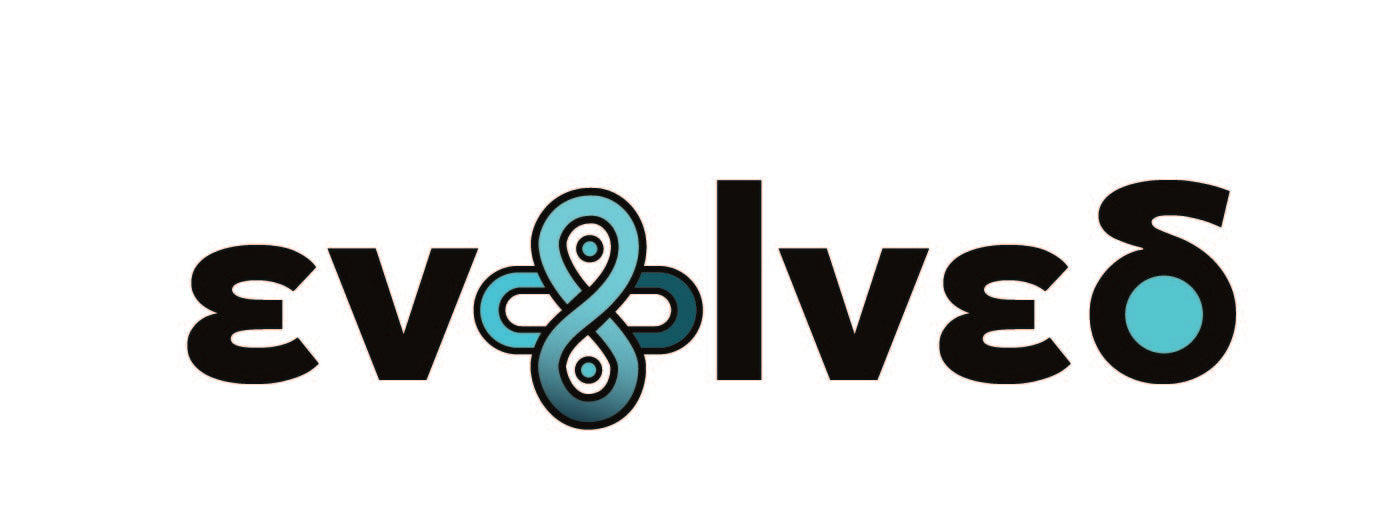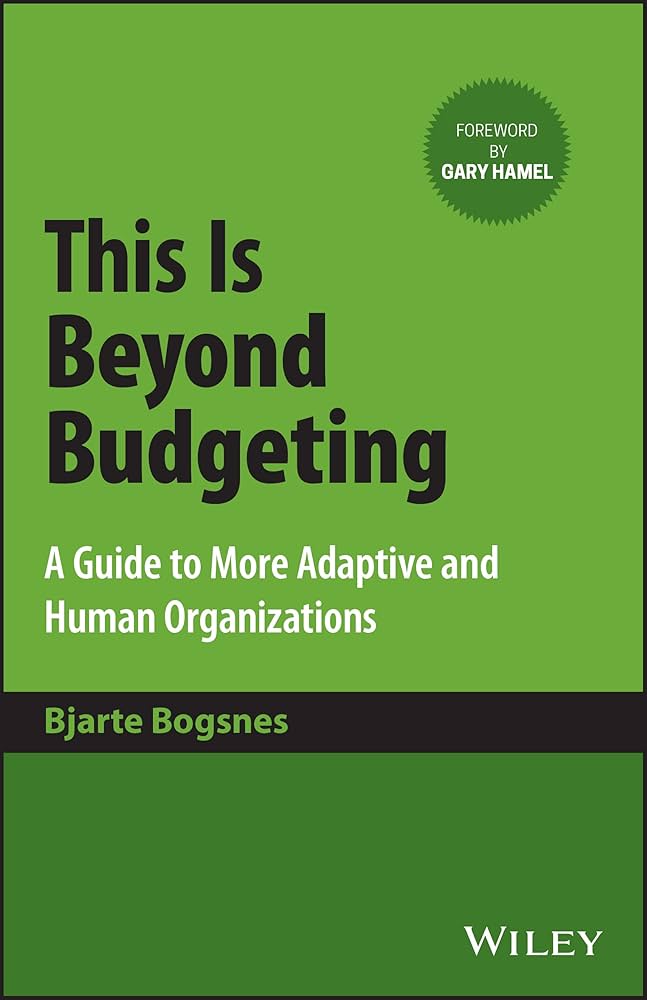This Is Beyond Budgeting: A Guide to More Adaptive and Human Organizations
ISBN
ASIN B0C1DP32GC
Description
The pressure on executive teams is immense. They keep being challenged by stakeholders about the need for change and radical transformation, and not just on becoming greener and more sustainable. The pressure is also about becoming more dynamic and adaptive and less bureaucratic. There is a jungle of models and thousands of books claiming to have the answer. No wonder many feel overwhelmed and confused.
In This is Beyond Budgeting: A Guide to More Adaptive and Human Organizations, award-winning author Bjarte Bogsnes describes a tested and proven way of making organizations more adaptive and human. This involves radically changing traditional management, including the budgeting process and the central nervous system of rigid and bureaucratic organizations. In this book, you’ll learn to establish a highly decentralized and dynamic management model with more adaptive and self-regulating processes that align with and not against human nature.
The author explains what the Beyond Budgeting model entails and illustrates its use with real-world case studies of companies that have successfully implemented it. He discusses the most common challenges encountered during the implementation of Beyond Budgeting, including the challenge of changing not just what we do but also how we think. This includes discarding the two main assumptions behind traditional management: that the future is predictable and plannable and that people can’t be trusted.
Beyond Budgeting demonstrates how to take the principles of agile and scale them up to the enterprise level through a comprehensive model that offers a coherent combination of leadership principles and management processes. The book also describes the many benefits companies can realize by exploring and embracing management innovation as boldly as technology innovation.
This audiobook will earn a place in the libraries of managers, executives, board members, and other leaders seeking a better way to lead and manage in new and different realities with increasing complexity and volatility, and where employees have new and different expectations way beyond just a paycheck.
Zen and the Art of Organising Work: an Illustrated Guide: The Hidden Anatomy of Effective Organisations… Using Systems Thinking to Unlock Nature’s Secrets
ISBN
1800463359; 978-1800463356
Description
We live in times of unprecedented turbulence and uncertainty, and we are losing faith in our ability to organize ourselves to deal with it. The traditional ‘top-down’ functional hierarchy doesn’t feel as secure as it once did, and new generations of workers demand something more than the kind of life and career it is capable of offering.
But when we look for an alternative, we are faced with a miasma of competing claims for different organizing principles. Do we need to be purpose-led or profit-driven? Fixed or flexible? More centralized or decentralized? Hierarchical or networked? Agile or structured?
This situation is perilous. It is also unnatural—in a very fundamental sense—because it demonstrates that we have failed to learn nature’s tricks about how to survive and grow in any environment, no matter how turbulent and unpredictable.
The remedy prescribed in this book is not a choice between ‘this’ or ‘that’; it is about balance—or, more specifically, maintaining a set of balances that continuously shift to tame the complexity faced and created by organizations. Balance begets calm and poise. Calm and poise beget clarity of thought, decisiveness, and agility.
This book describes the balances organizations must strike to survive and thrive. It helps readers understand and make sense of organizational life's mess and muddle. It also helps design healthy workplaces and diagnose and cure diseased ones.
It can do this because the book is not a manifesto of hope and wishful thinking. It brings together decades of esoteric knowledge about systems and how they work in a form that is both accessible and practical. To a curious reader, it is the key to a world of ideas that have largely remained hidden. For a management practitioner, it provides a new perspective on familiar problems and a platform for action. It helps a leader see what is and what could be.
Present Sense: A Practical Guide to the Science of Measuring Performance and the Art of Communicating it, with the Brain in Mind
ISBN
1838591095; 978-1838591090
Description
In this provocative yet practical guidebook, Steve Morlidge demonstrates why the performance reporting approach and methods that all information professionals have been taught fail and what we need to do differently to help us make sense of the dynamic, complex, and data-rich world in which we now live and work.
Reporting on performance should not be treated as worthy but dull, requiring no more than routine comparisons of actual against targets. This traditional approach is based on the false premise that organizations can be managed as simple mechanical systems operating in a predictable environment. The methods associated with it, such as variance analyses and data tables used to measure and communicate performance, are completely inadequate.
Instead, Morlidge argues that performance reporting should be reconceived as an act of perception conducted on behalf of the organization, helping it make sense of the sensory inputs (data) it has at its disposal. To do so effectively, performance reporters need to learn from and exploit the strengths of their own brains, compensate for their weaknesses, and communicate in a way that makes it easy for their audience’s brains to assimilate.
Drawing on the latest insights from cognitive science in this book, you will learn:
• How to bring a dynamic perspective into performance reporting • How to deploy a set of simple tools to help speared the signal from the noise inherent in large data sets and to make sound inferences • How to set goals intelligently • About the grammar of data visualization and how to use it to design powerful and simple reports
In this way, information professionals are uniquely charged with the responsibility of creating the shared consciousness that is a prerequisite for organizations to respond effectively to and adapt to their environments.
The Little Book of Beyond Budgeting: A New Operating System for Organisations: What it is and Why it Works
ISBN
1785899287; 978-1785899287
Description
It is difficult to think of a business process that is as widely unpopular, dysfunctional and discredited as traditional budgeting, yet businesses carry on doing it because they believe that there is no alternative .
But there is - yet over a decade after the creation of the Beyond Budgeting movement, many business people are unaware of its existence. And many of those that have heard of it find the Beyond Budgeting ideas difficult to grasp because of the way that they have been conditioned to think about the process of management.
Designed for the pocket, not the bookshelf, to be read on the go and shared with colleagues, this small guidebook distills nearly twenty years of practice and research by the author. Filling in these gaps in awareness and understanding helps promote intelligent conversations and informed choices about how businesses are run.
The key messages of this book are:
Budgeting lies at the heart of the traditional management process that has dominated business practice since the 1920s
Since it is inherently inflexible, bureaucratic, and dependent on a command and control management mentality, traditional budgeting is ill-equipped to cope with the turbulent environment faced by businesses and the aspirations of their workforces, who increasingly expect freedom, challenge and respect from their employers
Traditional budgeting is also philosophically and practically incompatible with many emerging management practices, such as Lean and Agile Development.
Beyond Budgeting provides all of the control functions of traditional budgeting, but in different ways, based on a business's specific needs and the context in which it operates.
The benefits are amplified when it is implemented in a devolved organization based on the principles of accountability, transparency, and trust.
Learn how Beyond Budgeting helps build a 21st-century operating system for organizations and enables superior financial performance, better processes, and a more fulfilling environment for employees.
The Little (illustrated) Book of Operational Forecasting: A short introduction to the practice and pitfalls of short term forecasting - and how to increase its value to the business
ISBN
1789013429; 978-1789013429
Description
This is a guidebook about short-term Operational Forecasting—the sort that is done to determine how much product you need to source or how many people you need to draft in to meet customer demand.
It is organized under five headings: 1. The purpose of operational forecasting 2. Understanding demand 3. Forecasting methods 4. Understanding forecast performance 5. Managing forecast performance.
The first two sections and part of section three are essential reading for anyone involved in or responsible for operational forecasting. The rest of the book is most helpful for practitioners.
The aim is to produce something that provides a useful introduction to operational forecasting for both practitioners and their bosses by filling in the gap between a naive, common-sense understanding of short-term forecasting and the complex technicalities of mathematical forecasting techniques.
The author's background as a self-taught business-orientated forecasting nerd with limited mathematical expertise qualifies who tells it how it makes him well-qualified to fill this gap.
The book has been designed to be simple but not simplistic. It uses short, to-the-point learning points supported by clear graphics. It is technically sound but also highly practical.
The hope is that it will help create a common language to help people talk intelligently about forecasting and help stop people doing dumb stuff - which is where most of the potential for improvement lies. It will also help people design good forecast processes and inform software purchasing decisions. In doing so, it will help people realize that forecasting is important and that investing in people as well as software will generate enormous benefits for many businesses.
This little book about forecasting comes with a big message for forecasters and their audiences.
Most forecasting books bury the important perspectives in methodological detail. This one stands above the forest: it offers so many memorable takeaways that you'd almost like to commit the text to memory. And Steve does all this with simplicity, style, and humor. It's quite an accomplishment.
Len Tashman, Editor of Foresight, the premier publication for business forecasters.
This book is the essential forecasting primer for the first-time forecaster or practitioner wanting to know more. Excellence in forecasting stems from understanding more than algebra and the mechanical application of predictive analytics. An appreciation of the potential perils and pitfalls, low-yield activities, and must-do s is crucial. I thoroughly recommend this book as a great introduction to themes that will elevate the knowledge and awareness of a forecaster in the field.
Simon Clarke, Group Director of Forecasting, The Coca-Cola Company
This book is very comprehensive and well-organized, touching on essential yet frequently overlooked elements of the business forecasting process. It is arranged in bite-sized chunks, each delivering an important point, while the message is reinforced by an accompanying graphic. Both practicing forecasters and the managers who oversee or participate in the forecasting process will find this a fast and invaluable read.
Michael Gilliland, Product Marketing Manager - SAS Forecasting. Author of The Forecasting Deal and principal-editor of Business Forecasting: Practical Problems and Solutions
Future Ready
ISBN
978-0470747056
Description
The 2007-2009 financial crisis in the financial markets has exposed serious flaws in management methods. The failure to anticipate and deal with the consequences of the unfolding collapse has starkly illustrated what many leaders and managers in business have known for years. In most organizations, the process of forecasting is badly broken. For that reason, forecasting business performance tops the list of concerns for CFOs across the globe.
It is time to rethink how businesses organize and run forecasting processes and how they use the insights they provide to navigate these turbulent times. This book synthesizes and structures findings from various disciplines and over 60 years of the author's combined practical experience. This is presented in the form of a set of simple strategies that any organization can use to master the process of forecasting. The key message of this book is that while no mortal can predict the future, you can take the steps to be ready for it. ’Good enough’ forecasts, wise preparation, and the capability to take timely action will help your organization to create its own future.
Written in an engaging and thought-provoking style, Future Ready leads the reader to answers to questions such as:
What makes a good forecast?
What period should a forecast cover?
How frequently should it be updated?
What information should it contain?
What is the best way to produce a forecast?
How can you avoid gaming and other forms of data manipulation?
How should a forecast be used?
How do you ensure that your forecast is reliable?
How accurate does it need to be?
How should you deal with risk and uncertainty
What is the best way to organize a forecast process?
Do you need multiple forecasts?
What changes should be made to other performance management processes to facilitate good forecasting?
Future Ready is an invaluable guide for practicing managers and a source of insight and inspiration to leaders looking for better ways of doing things and to students of the science and craft of management.
Praise for Future Ready
"Will make a difference to the way you think about forecasting going forward"
—Howard Green, Group Controller Unilever PLC
"Great analogies and stories are combined with rock solid theory in a language that even the most reading-averse manager will love from page one"
—Bjarte Bogsnes, Vice President of Performance Management Development at StatoilHydro
"A timely addition to the growing research on management planning and performance measurement."
—Dr. Charles T. Horngren, Edmund G. Littlefield Professor of Accounting Emeritus Stanford University and author of many standard texts, including Cost Accounting: A Managerial Emphasis, Introduction to Management Accounting, and Financial Accounting
"In the area of Forecasting, it is the best book in the market."
—Fritz Roemer. Leader of Enterprise Performance Executive Advisory Program, the Hackett Group




